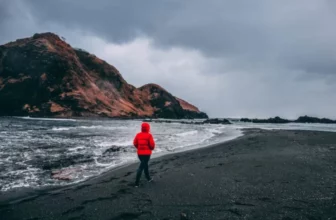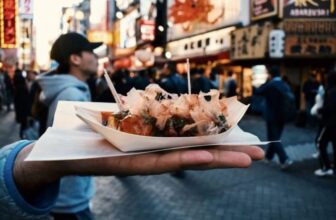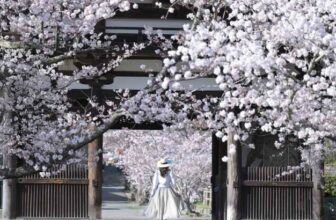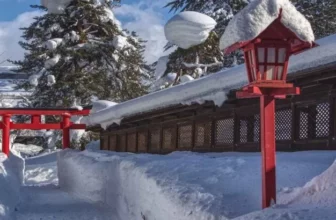When planning a trip to Japan, you should consider what kind of weather you want. There is no best time of the year to travel to Japan, making the decision increasingly difficult.
Each season offers its unique benefits and temperatures. As a traveler, you need to decide if you can handle the snow or the hot temperatures of summer. Or if you want to avoid certain seasons because of an influx of tourists.
Here’s the top information about summer in Japan to make your decision easier, including what activities are available, the weather, and the best places to visit.
Next read: 8 Weird Things To Do In Japan – An All-Round Quirky Destination
Weather in Japan in Summer
Summer in Japan is usually from June to mid-September and can vary slightly depending on the location. Japan’s summer temperatures range from 70ºF to 90°F, so it’s a hot and humid climate. The hottest and most humid months of the year are July and August, ranging from 78% to 83% relative humidity. Some sudden and unpredictable summer rainfall is typical in these summer months.
It is recommended to carry an umbrella in these months for protection from the rain and to avoid possible heat stroke from spending hours in the sun. This could possibly get uncomfortable for sightseeing if you dislike humidity; however,, summer can be one of the busiest times to visit Japan.
Japanese summer weather can be difficult to get used to for travelers from more moderate climates. However, with some planning, it is possible to avoid the hot weather in Japan.
The humidity level is extreme in late June, accompanied by the heat. The end of June and early July is known as tsuyu, the rainy season. It is accompanied by constant rain and occasionally typhoons, with the average Tokyo summer weather reaching 71.6 °F and an average rainfall of 167.7mm.

Top Activities in Summer Time in Japan
From historic temples to modern buildings, beautiful tea gardens, extravagant arcades and lively festivals, Japan has so much to offer everyone. Here are some interesting things to do in Japan to experience an unforgettable trip. Whether it’s your first trip or if you are an avid Japanese tourist, you’ll be enthralled.
Visit a Summer Festival
The hot summer weather in Japan makes for the best time to host lively traditional festivals. It’s also a great opportunity to eat a wide array of summer foods, including sōmen noodles, kakigōri, and yukata.
The Nebuta Matsuri festival in Aomori Prefecture is internationally accredited and is held annually between the 2nd and 7th of August. Colorful, illuminating floats are paraded by artists alongside traditional dances and captivating firework shows. Another awesome festival is the Tenjin Matsuri festival in the cooler mountainous regions.
Enjoy the Flowers
Exclusively in the rainy season, you can view the beautiful hydrangeas that bloom throughout the country.
Hokkaido, the most northern prefecture, is also well known for its cool temperatures and beautiful flower fields in Furano-Biei. Farm Tomita in the town of Biei hosts many tourists from its lavender fields that color the farm in a light purple hue.

Hit the Beach
A beach day is also a great way to get some relief from the heat. Several beautiful beaches in the Tokyo region include Uigahama Beach and Zushi Beach. Okinawa prefecture is famous for its white shores and crystal blue waters beaches to enjoy snorkeling and diving.
Historic Museums
Summer in Japan is the best time to visit the Hakone Open Air Museum and indoor facilities. There are various museums offering something for everyone, from traditional art to contemporary art, history, war, science, disasters and special interests. Some special interest museums include the Omiya Bonsai Art Museum, The Sand Museum and the Toto Toilet Museum.
Hike Beautiful Mt. Fuji
Summer temperatures in Japan offer the best conditions for climbing Mt. Fuji due to the cold temperatures at its peak. Climbing may take a few days, depending on the chosen route.
Spot Fireflies
Fireflies can be seen on summer nights from June to August in Japan, with rural areas like Ohara offering greater chances to spot these unique creatures. The Japanese love catching fireflies in summer. It is a favourite pastime, and the regions are riddled with cicadas.

Top Places to Visit in Japan in Summer
If you are planning a trip to Japan in the summer, departing to locations in the mountains where the Japanese summer temperatures more bearable is recommended.
These cooler regions include Nikko, Karuizawa, Hakone, magical Hokkaido, and other areas in northern Japan. Apart from these cooler cities, there are more unique places to visit if you don’t mind the heat and humidity and want an all-round experience of the country.
Kyoto
Kyoto offers a traditional Japanese feel with brightly colored kimonos seen in wooden teahouses, ornate temples, bamboo forests, and golden shrines. The neighborhoods surrounding the mountains are a sight to see with their stone streets, monks in robes, and old wooden houses.
Tokyo
Tokyo is another must-see destination being the ultra-modern region of the country. Skyscrapers and unique buildings are found in this city, accompanied by busy pedestrian crossings, distinctive fashion, and a number of unique restaurants.
Tokyo can be overwhelming at times, but it offers unique themed cafés, sensory shows, and enticing arcades that other countries cannot showcase quite as interestingly.

Takayama
Takayama is for those who prefer a smaller town feel and is located on the edge of the Japan Alps — one of the best least visited places. This small town has a historic atmosphere with neatly cut trees and bright red bridges hanging over the river.
Nikko
Nikko is a UNESCO World Heritage Site and a temple town located in the mountains, a few hours north of Tokyo. Visit Nikko if you need a retreat from the hustle and bustle of city life. It is famous for its beautiful temples and shrines with vermillion gates and moss-covered lanterns.

Koya-San
Koya-San is an interesting place to visit in Japan to experience the countryside. It is a secluded and sacred region located in the forest mountains of Kansai. It is a great place to visit if you want to get an idea of what monk life is all about by staying in a shukubo or temple.
There is the Okunion forest cemetery to visit here and many activities to partake in, including eating a delicious vegetarian Buddhist meal called shojin ryori.
FAQs about Japan in Summer
-
What to Wear in Japan in the Summer
There can be a large temperature gap when it is summer in Japan, but usually it is very hot. You may feel a little chilly in the northern regions of the country in the morning and early evening or when it rains in June.
It is recommended to wear a light cardigan over your t-shirt in June. In July and August, just a t-shirt or a one-piece is sufficient in the extreme heat.

A jacket can be taken with you at any time to ensure you don’t get too cold in the highly air-conditioned restaurants and indoor facilities. Comfortable pants and shoes are a must when walking around Japan for sightseeing.
Sneakers are recommended as a result of all the walking you will be doing. Loose tops and sandals can be worn when less walking is required for more relaxed activities.
-
What to Do if a Summer Typhoon hits?
Before traveling to Japan in Summer, make sure you are aware of the evacuation routes from the place you are staying in. Ensure your phones are charged and that there are no items left outside that could blow around and cause more damage.
Check the news and the tropical storm advisories from the Japan Meteorological Agency and stay away from exposed power lines. Have a flashlight, non-perishable food, a phone, a charger, rain gear, a change of clothes, your bank cards, and your ID/passport on hand in case.
You can regularly check the Japanese disaster website for any updates on the weather.

-
Is Japan expensive to visit?
Visiting Japan does not have to be expensive. Make sure you keep transportation and accommodation costs low, and you should be able to plan your ideal trip.
For a comfortable backpacker lifestyle, $400-$1000 a week should be enough for a great stay. A more mediated holiday vibe will cost around $1500 – $2000 a week. Approaching your trip with an open mind to staying in backpackers hostels and unique locations will cut costs largely.
Avoid fancy hotels and restaurants and eat with the locals. Ensure that you have the correct information about ATM’s in Japan for where your international card will be accepted.
Not only is this a cheaper way to travel, but it allows you to get a real feel of what Japanese life is — something that fancy hotels and restaurants fail to do.
-
What is a Good Souvenir to Buy?
Souvenirs are not an issue to find in Japan as all tourist spots have stalls or shops selling various unique items. Japanese people love to buy food as a souvenir; however, there are other items that you will find in these shops.
Standard souvenirs include fans, dolls, Maneki Neko, chopsticks, origami, pottery, kimonos, or beauty products.





